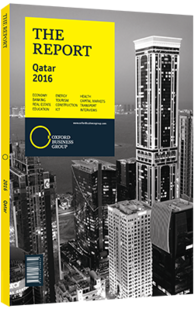New data projects shed light on Qatar tourism trends
The breadth of available data on tourist activity in Qatar expanded considerably in 2015 and will deepen further in 2016, providing valuable tools and market visibility for private businesses, policymakers and potential investors. The government agency responsible for planning, regulating and promoting the sector, Qatar Tourism Authority (QTA), currently compiles quarterly performance reports, which it distributes to public and private sector stakeholders. Yet their content has so far been limited to a clutch of indicators on incoming visitors and hotel performance. With more data points on things like visitor spending and fund sources, QTA and other sector stakeholders might hasten progress towards 2030 goals.
Visitor Survey
To this end, QTA has designed a five-minute visitor survey, which it prepared and tested in 2015 and hopes to begin conducting in short order, pending approvals from other agencies. In partnership with Hamad International Airport (one of two main entry points to the country, along with the Qatar-UAE Road at the Saudi border), it will consult visitors on eight topics: primary residence, purpose of visit, size of party, length of stay, type of accommodation, amounts spent, satisfaction with trip and, crucially, who funded it. Such information will reveal a great deal about source markets and spending patterns, feeding into decision-making at a policy level.
Domestic Tourism
A separate survey for domestic tourists has already begun. Its developer, the Social and Economic Survey Research Institute at Qatar University, launched a first wave in May-June of 2015, followed by two others in November 2015 and January 2016. Somewhat longer than its foreign-visitor counterpart, this questionnaire is conducted by phone with local residents (nationals and foreigners) in three main parts, with questions tailored to exclude data that might skew results. The first section concerns day trips, which must be non-routine, last at least three hours and include a destination of genuine touristic interest. The second covers overnight trips and asks for details on the use of facilities such as gyms, restaurants and guest services. The final section deals with outbound tourists, asking about destinations visited, party size and spending.
Number Crunching
Information culled from both surveys feeds into a data management system developed by the UN World Tourism Organisation, called the Tourism Satellite Account (TSA). The purpose of TSA systems – either being used or under development in over 60 countries – is to estimate the economic impact of tourism in detail. In Qatar’s case, development of the TSA began in 2013, overseen by a committee of representatives from QTA and the Ministries of Interior; Finance; Development, Planning and Statistics; and Economy and Commerce. The draft TSA estimated domestic tourism spending at QR9.3bn ($2.6bn) in 2013; inputs from survey data will greatly expand the range of detail. Insights gained from respondents will help QTA define the impact of tourism on the economy, allowing it to better monitor, plan, regulate and develop the sector.
Hotel Benchmarking
Another source of data will come from STR Global, an industry statistics provider with which QTA partnered in September 2015 to increase the scope of its data on the local hotel industry. STR – which works with 50,000 properties worldwide, including 41 of Qatar’s 120 as of late 2015 – will now collect figures on QTA’s behalf, and pass bespoke analysis directly to the agency. Beyond the usual key performance indicators (KPIs) of occupancy, revenue per available room and average room rate, QTA will receive KPIs on average length of stay, food and beverage revenue, and other types of income. STR will then plug these KPIs into regular reports comparing Qatar’s hospitality outfits to others worldwide. This information, to be made public, will enable investors to get a detailed perspective about the market and where hotels stand with regard to the entire industry.
You have reached the limit of premium articles you can view for free.
Choose from the options below to purchase print or digital editions of our Reports. You can also purchase a website subscription giving you unlimited access to all of our Reports online for 12 months.
If you have already purchased this Report or have a website subscription, please login to continue.

